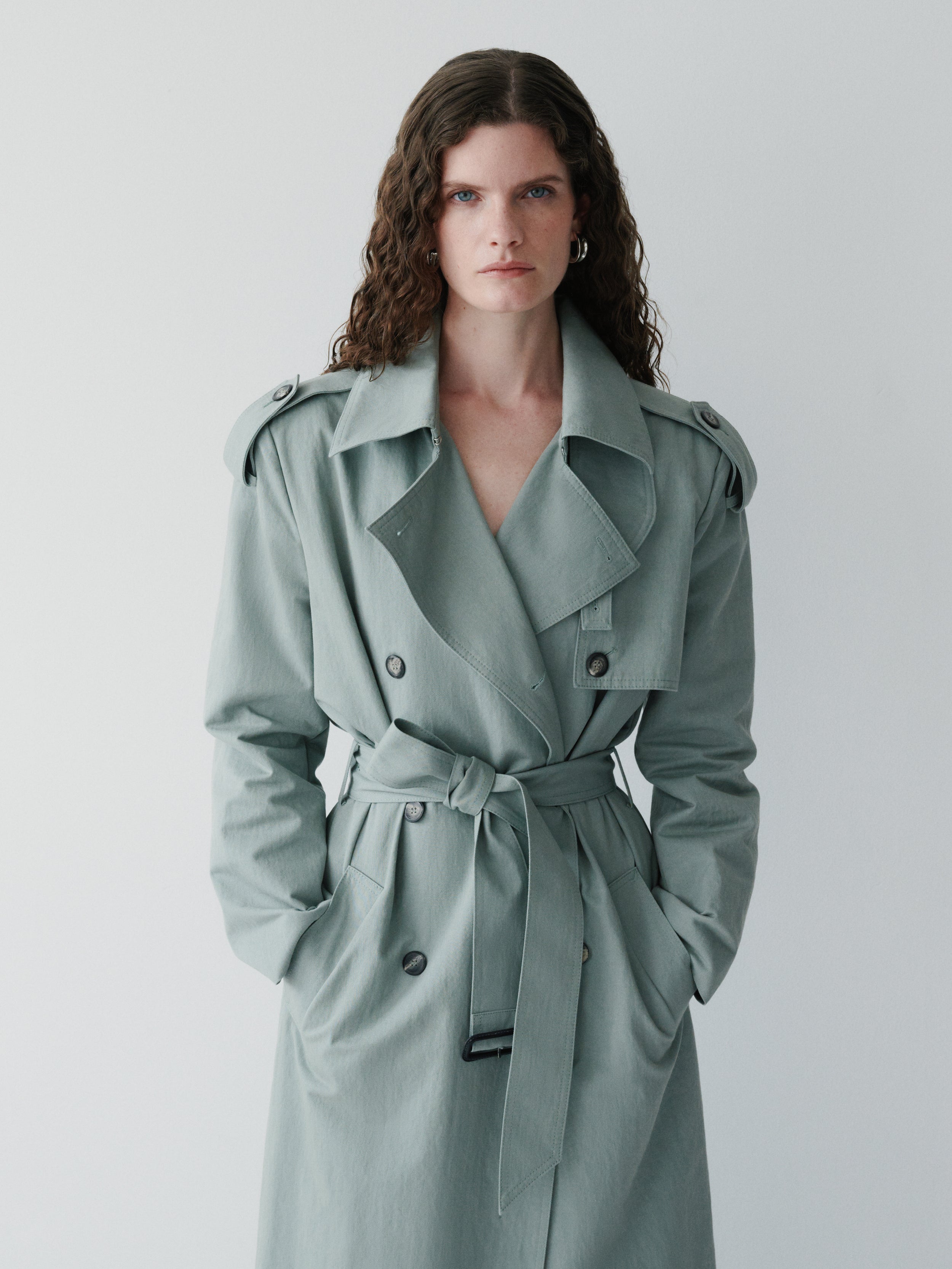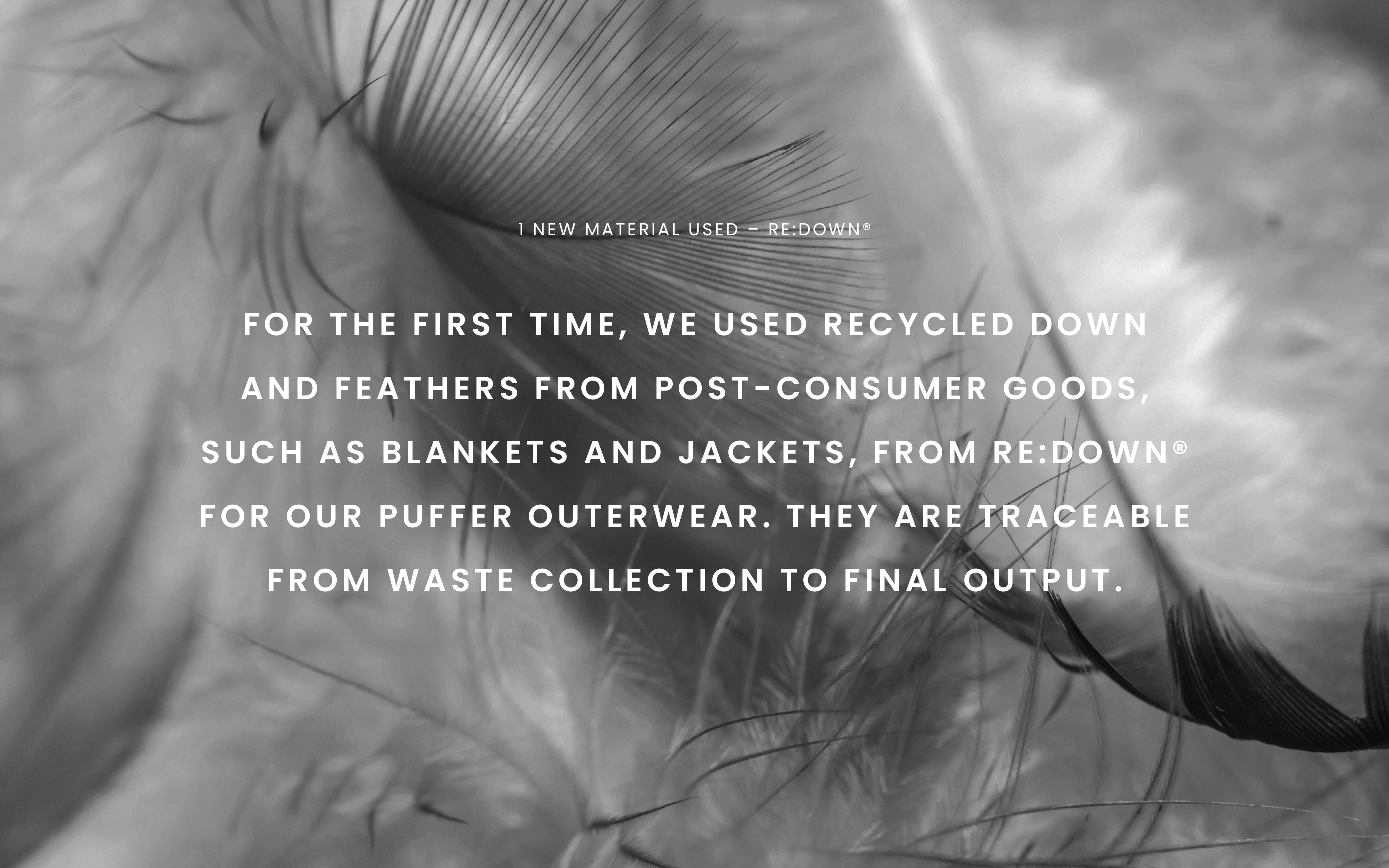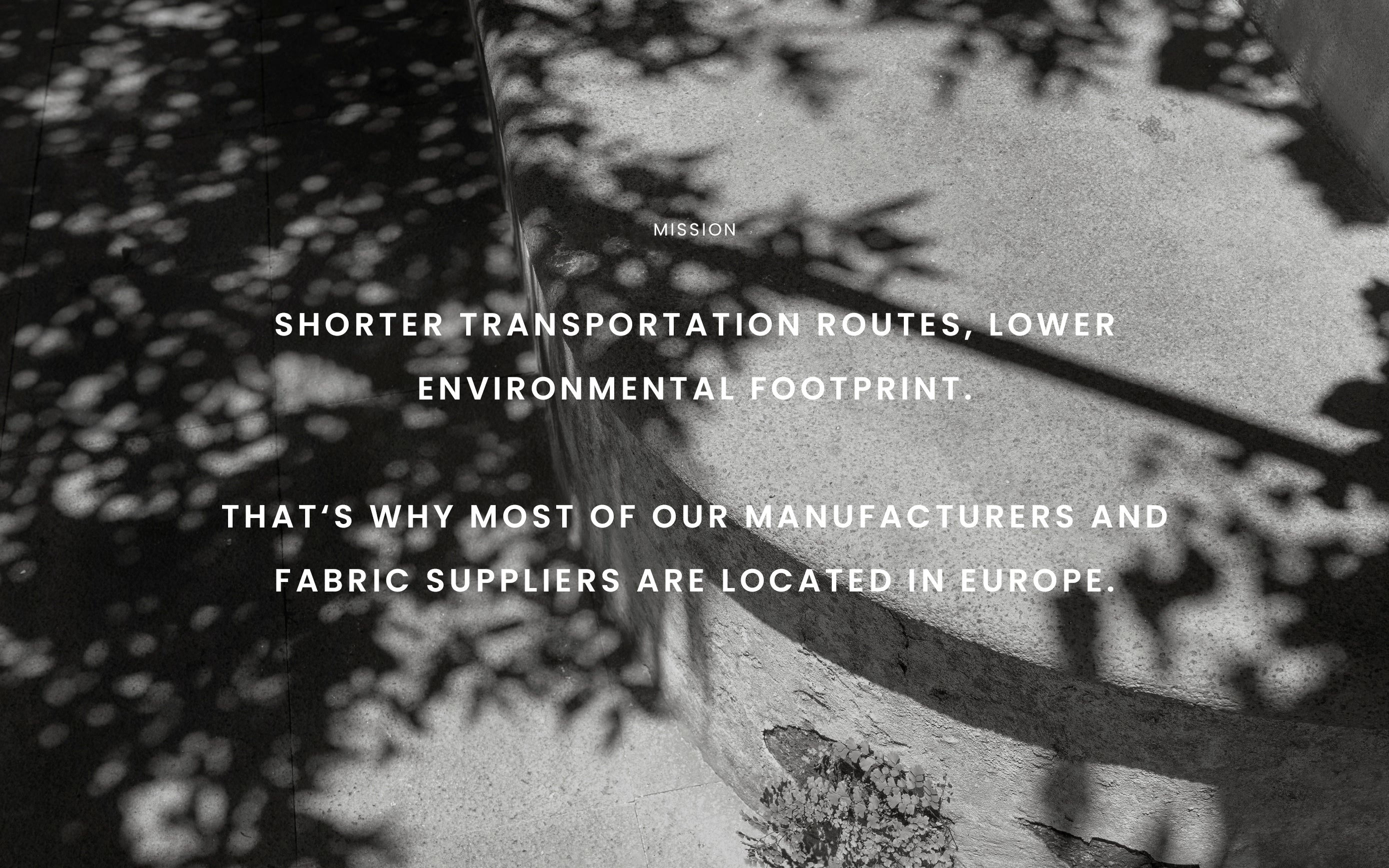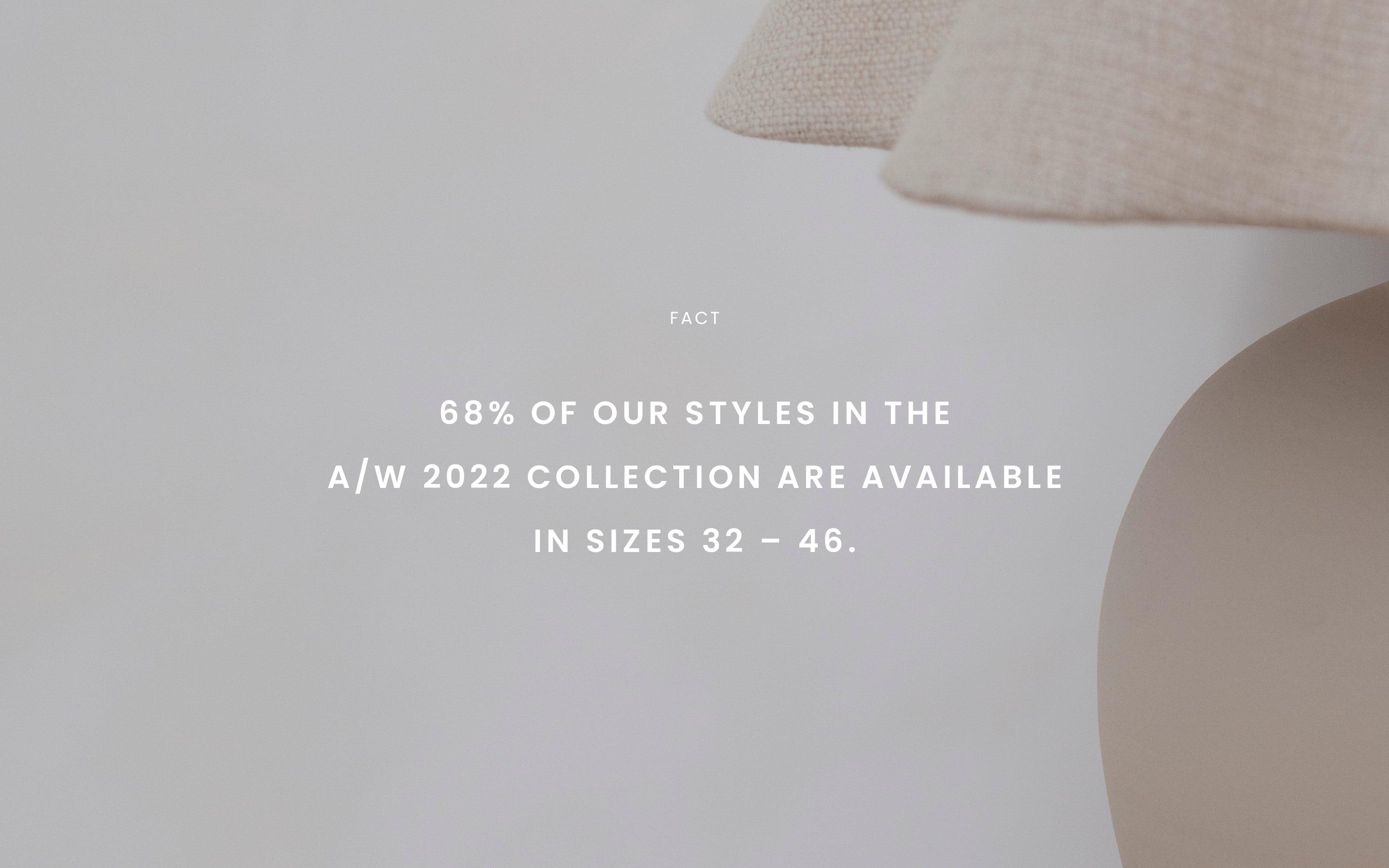Welcome to our new season impact report. Have a look at where we stand and follow our journey as we lower our negative impact. The new impact report replaces our former Sustainability-Reports and gives an insight into our sustainability efforts each season.
MATERIALS
We put a lot of effort into finding the right fabric for our garments. We always seek the finest quality to create high-class and long-lasting pieces, while at the same time, find fabrics made of lower-impact materials. Have a look at what our A/W 2022 styles are made of.
MATERIALS USED IN A/W 2022*
ViscoseandWoolare our most used materials.* The share of wool is especially high in our Autumn/Winter seasons as most of our signature coats are made of wool. We always ensure that the wool is mulesing-free and we only use viscose from producers which have been rated “Green Shirt” in Canopy’s Hot Button ranking.
* Data based on volumes used for shell and linings in A/W 22 collection
**Other: Cashmere, TENCEL™ Lyocell, Linen, Elasthane, Cow Leather, Lyocell (recyled), Acetate, Cotton.

Distribution of low impact materials
We have developed a preferred material framework to guide us when choosing materials. We aim to increase our share of Class A & B materials from season to season.
A: Target (e.g. Organic Cotton, Recycled Wool)
B: Target (e.g. Viscose with Green Shirt rating)
C: Transition (e.g. Mulesing-free Wool)
D: Transition (e.g. Cotton, Polyester)
E: Never (e.g. Conventional Leather)
* Data based on number of styles in the A/W 2022 collection that consist of min. >50% of a material in respective class.

Fiber categories
We want to reduce our usage of fossil-based synthetic fibers. This season we used 29,3% of fossil based synthetic fibers, like polyester, for shell and linings.
* Data based on volumes used for shell and linings in A/W 2022.
SUPPLY CHAIN
We mainly work with manufacturing partners (Tier 1) and fabric suppliers (Tier 2) located in Europe. One reason is a shorter supply chain. We are aware that transportation is only a small share in the CO2 footprint of a garment. Nevertheless, we also try to place our orders with manufacturers and fabric suppliers with the shortest distance between each other. Additionally, we are working with manufacturing partners based in China, who we’ve known for a long time and trust in their great expertise and know-how.
WHERE WE MANUFACTURE
WHERE OUR FABRICS COME FROM
FOOTPRINT
Not all CO2 emissions of our business operations can be avoided and reduced (yet). Since 2020, we are offsetting the parcel deliveries, returns and the operation of our online shop via Klimakollekte through Gold Standard certified climate protection projects. This year, we have for the first time, also compensated the emissions of all business travel by plane that could not be replaced by train travel.
In total, we have compensated 52,7 tons of CO2 for the first half of 2022. This is 4,7 times of the average per capita CO2 emissions in Germany (11,2 tons).*
*Source: German Environment Agency, 2021

Fact
4,5% of our orders from China were shipped by air freight.

Fact
95,5% of our orders from China were shipped by sea freight.

INCLUSIVITY
We want to be a strong advocate for diversity in fashion. It is important for us to offer a wide range of sizes so that our customers feel comfortable and confident. Currently, we offer a size range from 32 to 46 for most of our garments. We don’t want to stop here and are working on extending our size range.
Discover our SPRING/SUMMER 2023 Collection, which is with sizes from 32 to 52 for the first time.
Discover all products in extended sizes.












